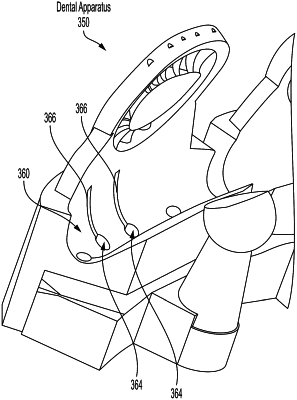| CPC B29C 64/35 (2017.08) [A61C 7/002 (2013.01); A61C 7/08 (2013.01); B29C 64/245 (2017.08); B29C 71/0009 (2013.01); B33Y 40/20 (2020.01); B33Y 80/00 (2014.12); B29C 2071/0027 (2013.01); B29L 2031/753 (2013.01)] | 14 Claims |

|
1. A method of forming a dental apparatus, the method comprising:
fabricating the dental apparatus from a resin using an additive fabrication process, wherein the dental apparatus comprises:
a body shaped to contact and conform to at least a portion of a dental arch; and
one or more concave surfaces disposed along the body, wherein at least one of the one or more of the concave surfaces comprises an aperture formed therethrough, wherein at least one of the concave surfaces comprising an aperture further comprises at least one channel formed therein that is radially oriented with respect to the aperture, and wherein the at least one channel facilitates flow of residual resin toward the aperture; and
centrifuging the dental apparatus using parameters sufficient to remove the residual resin from surfaces of the dental apparatus resulting from the additive fabrication process, wherein each aperture provides a flow path for the residual resin during the centrifugation so as to reduce or eliminate pooling of the residual resin on a respective concave surface of the dental apparatus.
|